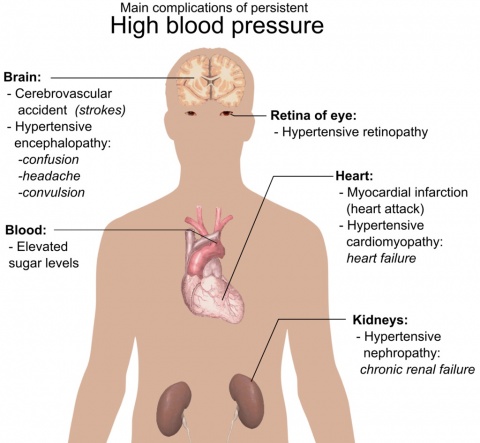Source: Pixabay/rawpixel
News • High blood pressure
Millions more: New guidelines could drastically raise hypertension numbers
Adopting new guidelines for high blood pressure (hypertension) would dramatically increase the number of people labeled as having the condition and being recommended for drug treatment, finds a study published by The BMJ today. The findings show that, if the guidelines were introduced in the US and China, more than half of those aged 45-75 years in both countries would be considered hypertensive.
The American College of Cardiology (ACC) and the American Heart Association (AHA) recently released guideline recommendations for hypertension with lower blood pressure values used to define elevated blood pressure, and lower treatment thresholds, than those recommended in current guidelines. While the impact of changes in guideline recommendations has been evaluated in the US, less is known about how they translate to other populations. China, in particular, has high levels of hypertension and the world’s largest population, so it is important to understand the impact of adopting these standards in China.

Source: Mikael Häggström [Public domain], via Wikimedia Commons
A team of researchers, led by Professor Harlan Krumholz at Yale School of Medicine, therefore set out to examine the effect of the 2017 ACC/AHA guidelines on the prevalence of hypertension and eligibility for new and more intensive treatment in the US and China. They analysed nationally representative data for adults aged 45 to 75 years from the US and China who would have a diagnosis of hypertension and be candidates for treatment on the basis of the ACC/AHA guidelines, compared with current guidelines. The results show that adoption of the 2017 ACC/AHA guidelines would dramatically increase the number of people with hypertension and those recommended for treatment.
For example, in the US, the new guidelines would classify 70 million people in the 45-75 year age group as having hypertension, representing 63% of the population in this age group. Adoption of these guidelines in China would lead to the classification of 267 million (55%) people in the same group as having hypertension. This would represent a relative increase of 27% in the US and 45% in China compared with current recommendations, say the researchers.
Furthermore, they calculate that 7.5 million people in the US and 55 million people in China would be advised to start drug treatment, while 14 million in the US and 30 million in China would be advised to receive more intensive drug treatment. Based on treatment patterns and current guidelines, 8 million Americans with hypertension are untreated, they add, which would be expected to increase to almost 16 million after the implementation of the ACC/AHA guidelines. In China, based on current treatment patterns, 75 million patients with hypertension are untreated, likely to increase to 130 million if the 2017 ACC/AHA guidelines are adopted.
If adopted, the 2017 ACC/AHA hypertension guidelines will markedly increase the number of people labeled as having hypertension and treated with drugs in both the US and China
The researchers point out that the study focused only on those aged 45-75 years. Therefore, additional people aged under 45 and over 75 years of age in both the US and China may have hypertension and be candidates for treatment. Nevertheless, they point to several important public health implications, such as the psychological effects of a disease label, the potential harms of unnecessary treatment, and the extra infrastructure needed to manage the substantial increase in patient numbers. They conclude: “If adopted, the 2017 ACC/AHA hypertension guidelines will markedly increase the number of people labeled as having hypertension and treated with drugs in both the US and China, leading to more than half of those aged 45-75 years in both countries being considered hypertensive.”
Source: The BMJ
12.07.2018











